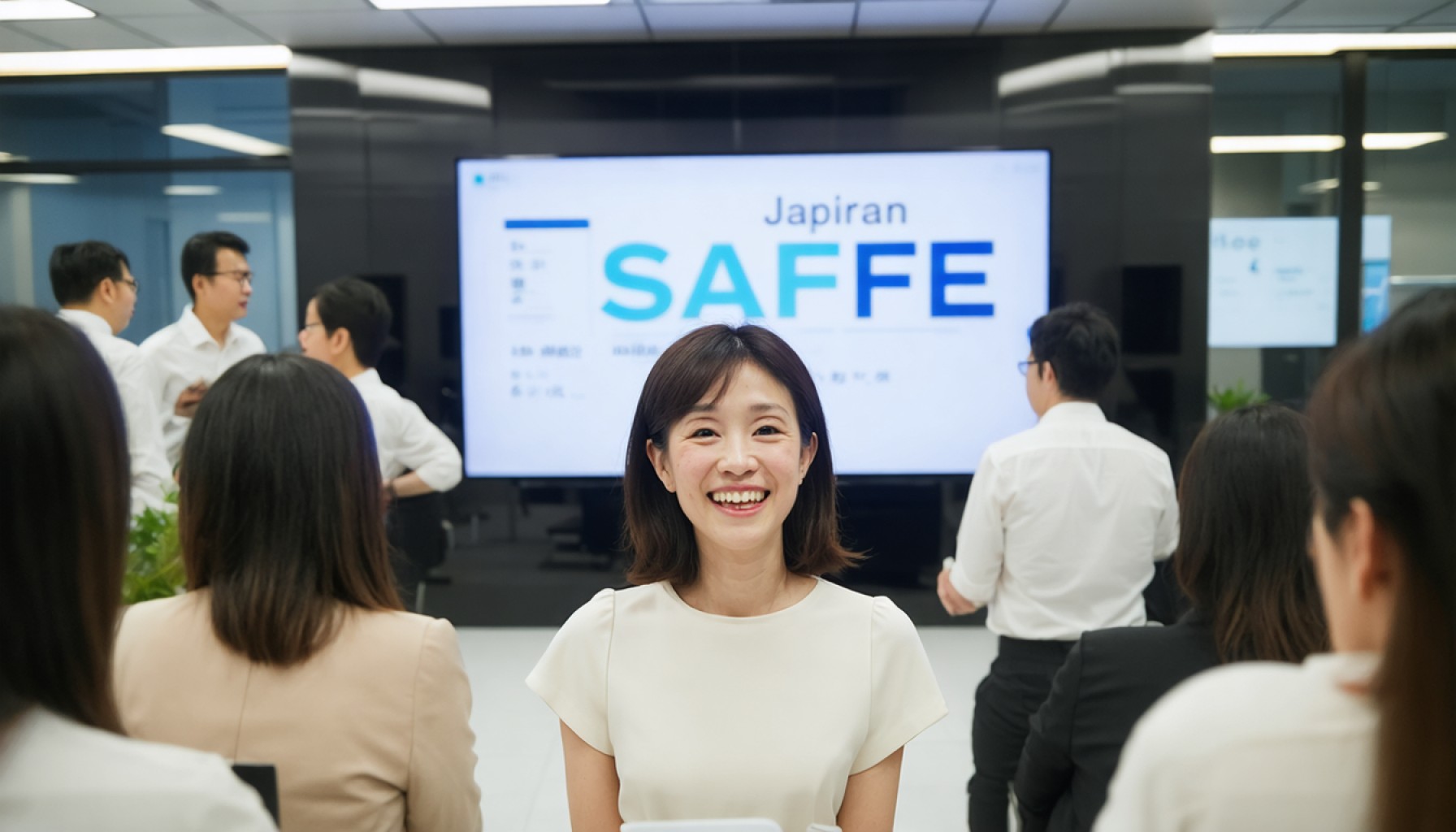- Japan’s Ministry of Health, Labour and Welfare hosted the SAFE Award Ceremony to highlight the importance of employee well-being as a central workplace mission.
- SAFE stands for safety, appreciation, fulfillment, and engagement, aiming to redefine thriving work environments by linking happiness to productivity.
- The initiative merges government policy with entrepreneurial spirit, showcasing companies where employee satisfaction and profitability coexist.
- Trailblazing companies transform their offices into harmonious spaces, exemplifying SAFE principles to boost morale and motivation.
- SAFE serves as a call to action, encouraging industries to adapt by treating employees as partners in achieving organizational and personal success.
- By promoting these ideals, Japan leads the way in creating transformative, innovative, and compassionate workplace environments.
Imagine a workplace where happiness isn’t just a side effect but a central mission. On a bright February day, such a vision became reality as Japan’s Ministry of Health, Labour and Welfare gathered professionals and policymakers under one roof for the much-anticipated SAFE Award Ceremony. The crowd buzzed with energy, a testament to a fresh, invigorating approach to employee well-being.
SAFE, an acronym capturing the essence of shining workplaces, aims to redefine what it means to thrive at work. This groundbreaking initiative, merging government strategy with entrepreneurial spirit, champions a simple yet profound notion: happiness fosters productivity. Within these enthused corridors, award recipients stood proudly, embodying the initiative’s success. They didn’t just excel in profitability but also glowed with employee satisfaction.
Under sharp lights and a ripple of applause, the ceremony celebrated trailblazers who transformed their offices into harmonious havens. Their stories illustrated SAFE’s core principles—safety, appreciation, fulfillment, and engagement—as they unraveled how morale and motivation sprout in nurturing environments. One could feel the collective heartbeat of innovation and compassion pulsating throughout the gathering.
This initiative is more than recognition; it’s a clarion call. As industries grapple with ever-evolving challenges, SAFE reminds us that employee happiness isn’t merely aspirational—it’s achievable. Businesses are encouraged to view their teams as partners in prosperity, unlocking doors to both individual and organizational growth.
By championing these ideals, Japan illuminates a path toward transformative workplace environments, driven by the belief that engaged, appreciated employees are the true architects of progress.
Unlocking Happiness at Work: How Japan’s SAFE Initiative Sets a New Standard
Introduction
The SAFE Initiative in Japan is a revolution in workplace management, focusing on happiness and well-being as key drivers of productivity. Rooted in the belief that safety, appreciation, fulfillment, and engagement create ideal conditions for thriving businesses, this groundbreaking effort shifts conventional paradigms. As global workforce dynamics evolve, learning from Japan’s approach can guide organizations worldwide.
How-To Steps & Life Hacks for a Happy Workplace
1. Promote Open Communication: Encourage feedback loops and regular check-ins between employees and management. Tools like anonymous surveys can provide insights into workplace morale.
2. Foster Inclusivity: Ensure diversity and inclusion are at the forefront of hiring and team-building efforts. Diversity not only enhances creativity but also strengthens problem-solving.
3. Prioritize Mental Health: Offer resources such as Employee Assistance Programs (EAP) and mindfulness workshops. Stress management initiatives can reduce burnout and improve job satisfaction.
4. Encourage Work-Life Balance: Implement flexible working hours and remote work options. Employees who can better balance personal and professional responsibilities often exhibit increased productivity.
5. Recognize and Reward: Regularly acknowledge efforts and achievements through awards, shout-outs, or incentives. Recognition fosters a sense of belonging and motivation.
Real-World Use Cases
– Salesforce: Known for its strong culture, Salesforce integrates the 1-1-1 model which aligns employee engagement with charitable activities, fostering a sense of purpose.
– Zappos: With a “happiness culture” as a core policy, Zappos empowers employees through skill development and decision-making autonomy.
Market Forecasts & Industry Trends
Market research indicates that companies focusing on employee well-being tend to outperform in retention rates and productivity metrics (source: Deloitte). Trends suggest an increasing demand for workplaces that prioritize mental health and flexibility, aligning with the global shift towards remote work and a balanced lifestyle.
Reviews & Comparisons
SAFE Initiative:
– Pros: Increases productivity, reduces turnover, and boosts employee morale.
– Cons: Implementing comprehensive change across diverse industries can be challenging and resource-intensive.
Controversies & Limitations
Critics argue that happiness-driven models may overlook performance metrics. Additionally, cultural variations mean that strategies successful in Japan might not directly translate elsewhere. Organizations must tailor these methods to fit local contexts.
Features, Specs & Pricing of Workplace Tools
Employers can incorporate tools like Slack for communication, Asana for project management, and Calm for meditation. Most platforms offer tiered pricing models, catering to both startups and large enterprises.
Security & Sustainability
Ensuring both data privacy and long-term viability of happiness initiatives requires investment in secure digital tools and ongoing assessment of program effectiveness. Integrate sustainability into corporate values, reducing carbon footprints through remote work options and eco-friendly practices.
Insights & Predictions
Experts predict an increase in hybrid work models with integrated well-being programs, propelled by innovations like AI-driven health assessments. Businesses that fail to adapt risk losing top talent to competitors who prioritize employee happiness.
Pros & Cons Overview
Pros:
– Enhanced loyalty and productivity.
– Lower absenteeism and healthcare costs.
Cons:
– Initial setup cost can be high.
– May clash with traditional, hierarchical management styles.
Actionable Recommendations
1. Start with small changes like mental health days and recognition programs.
2. Conduct regular employee satisfaction surveys to gather feedback.
3. Leverage technology to maintain high engagement levels in remote settings.
For businesses eager to emulate Japan’s success, the SAFE initiative offers a viable template for integrating well-being with profitability. Continuous adaptation of strategies can lead to a harmonious and thriving organizational culture.
Stay updated with workplace innovations and best practices by visiting the Forbes or Deloitte websites.
